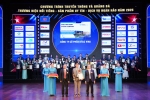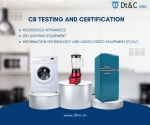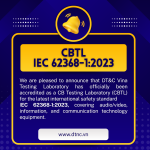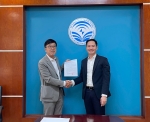IEC 62368-1 - Overview
IEC 62368-1 2nd Edition, the hazard-based product-safety standard for ICT and AV equipment, is set to supersede the outgoing IEC 60950-1 for ICT equipment and IEC 60065 for AV equipment.
The move is more significant than a simple merger or name change, because 62368-1 adopts fundamentally different engineering principles and terminologies. In addition, some existing products that comply with 60950-1 or 60065 will need to be re-investigated to achieve certification.
To help product manufacturers manage the transition, the American and European bodies have harmonized the date from which the 60950-1 and 60065 standards will cease and 62368-1 will take over. Following a recent update to the EU’s Official Journal (OJ) of legislation, and subsequent announcement by UL in the USA, the new date is December 20, 2020.
Another important aspect is that, like the outgoing standards, 62368-1 applies not only to the end-user product but also to components and subsystems such as power supplies. Product manufacturers need to bear this in mind to be sure of procuring acceptable parts throughout the transition period between now and December 2020, and in the subsequent period when only 62368-1 will apply.
Currently, then, the 62368-1, 60950-1 and 60065 standards are active in both North America and Europe. Although the situation may sound complicated, the standards have been allowed to coexist to help the industry transition to the new standard as smoothly and cost-effectively as possible.
With the DoW for both 60950-1 and 60065 drawing close, manufacturers that have not yet engaged with the new standard are advised to do so now to ensure certifications to the new standard are secured in time.
Scope of the new 62368-1 standard
62368-1 applies to all equipment currently subject to 60950-1 and 60065 safety standards, and further products are to be brought within its scope.
Clause 1 describes the scope of the standard, while Annex A contains a list of product types covered. Currently, these include:
- Computing and networking products such as servers, PCs, routers, notebook/laptop computers, tablets and their power supplies
- Consumer electronics such as amplifiers, home theater systems, digital cameras and personal music players
- Displays and display units including monitors, TVs and digital projectors
- Telecommunication products such as network infrastructure equipment, cordless and cell phones, and similar communication devices, including battery-powered devices
- Office appliances like copiers and document shredders
- Various other types of audio/video, information and communication technology equipment used in homes, schools, data processing centers, and commercial and professional environments
As with both 60065 and 60950-1, the examples provided in Annex A are not exhaustive, and equipment not listed is not necessarily excluded. Edition 3 of IEC 62368-1 is expected to include additional examples of equipment that has entered widespread use since the earlier standards were published. These could include smartphones, tablet computers, wearable computers, electronic kiosks and even 3D printers.
62368-1 applies not only at the product level but also – where relevant – to components and subsystems. This is the same situation that prevailed under 60950-1 and 60065, so companies that source third-party subsystems such as power supplies should inquire with the manufacturer to establish if the product is currently or has plans to be certified to 62368-1. This applies to units installed inside the equipment, such as chassis mount power supplies, as well as to external power supplies or adapters that are simply procured and shipped in the box with the equipment.
Aiding the transition to 62368-1
Second Edition of 62368-1 contains clauses designed to help companies manage their transition from the legacy standards. These effectively help companies decide how and when to certify their products to 62368-1, and to manage existing inventory of subsystems and components (like power supplies) that are already certified to 60950-1 and 60065.
An important – although, it must be noted, temporary – provision is the sub-clause 4.1.1, which enables companies to continue using their inventory of 60950-1 or 60065 parts in products certified to 62368-1. The clause states:
In the case of a Listed power supply, for example, due consideration can be as simple as ensuring the product is only used within its established electrical ratings.
Readers familiar with the requirements of 60950-1 and 60065 may have spotted the potential for some problems because the legacy standards classify energy sources and circuits differently. One example is that a 60950-1 certified switched-mode power supply typically has output circuits classified as safety extra-low voltage (SELV), whereas IEC 62368-1 refers to ES1 energy sources, which considers both voltage and current. As a result, SELV is no longer defined.
Although this is true, TC108 has taken a pragmatic approach to the issue, and has recognized that a SELV circuit is intended to be safe to touch by a user or operator, in the same way that an ES1 source is safe to touch by an ordinary person (see the section on “Hierarchy of 62368-1 Safeguards” for more information on user classifications). To aid transition to the new standard, the two are regarded as offering equivalent levels of safety. Hence, interconnection of 60950-1 SELV circuits and 62368-1 ES1 circuits is considered acceptable in practice without exhaustive analysis.
Note that sub-clause 4.1.1 is expected to be removed from future editions of 62368-1. TC108 has considered recommending that the provisions should be extended into Edition 3, which is currently being reviewed for publication. However, the European committee CENELEC intends to remove the legacy component provision 4.1.1 from Edition 2 of EN 62368-1, due to come into effect December 20, 2020, and has stated that it will not be featured in Edition 3, no matter the result of the TC108 discussion. UL, on the other hand, will maintain acceptance of 60950-1 or 60065 for legacy products after the 2020 date of withdrawal as long as significant changes involving safety of critical components are not made to the specific parts in question. Hence, companies must take these regional differences into consideration when preparing their transition plan to the 62368-1 standard.








![[MIC] Officially issued QCVN 134:2024/BTTTT - National technical regulation on specific absorption levels for handheld and body-worn radio devices according to Circular 19/2024/TT-BTTTT of Ministry of Information and Communications](https://cdn0577.cdn4s.com/thumbs/qcvn-134_thumb_150.jpg)



![[Latest] Circular 02/2024/TT-BTTTT regulating the List of potentially unsafe products and goods under the management responsibility of the Ministry of Information and Communications](https://cdn0577.cdn4s.com/thumbs/trang-huy-hieu-the-loai-logo-2_thumb_150.jpg)
